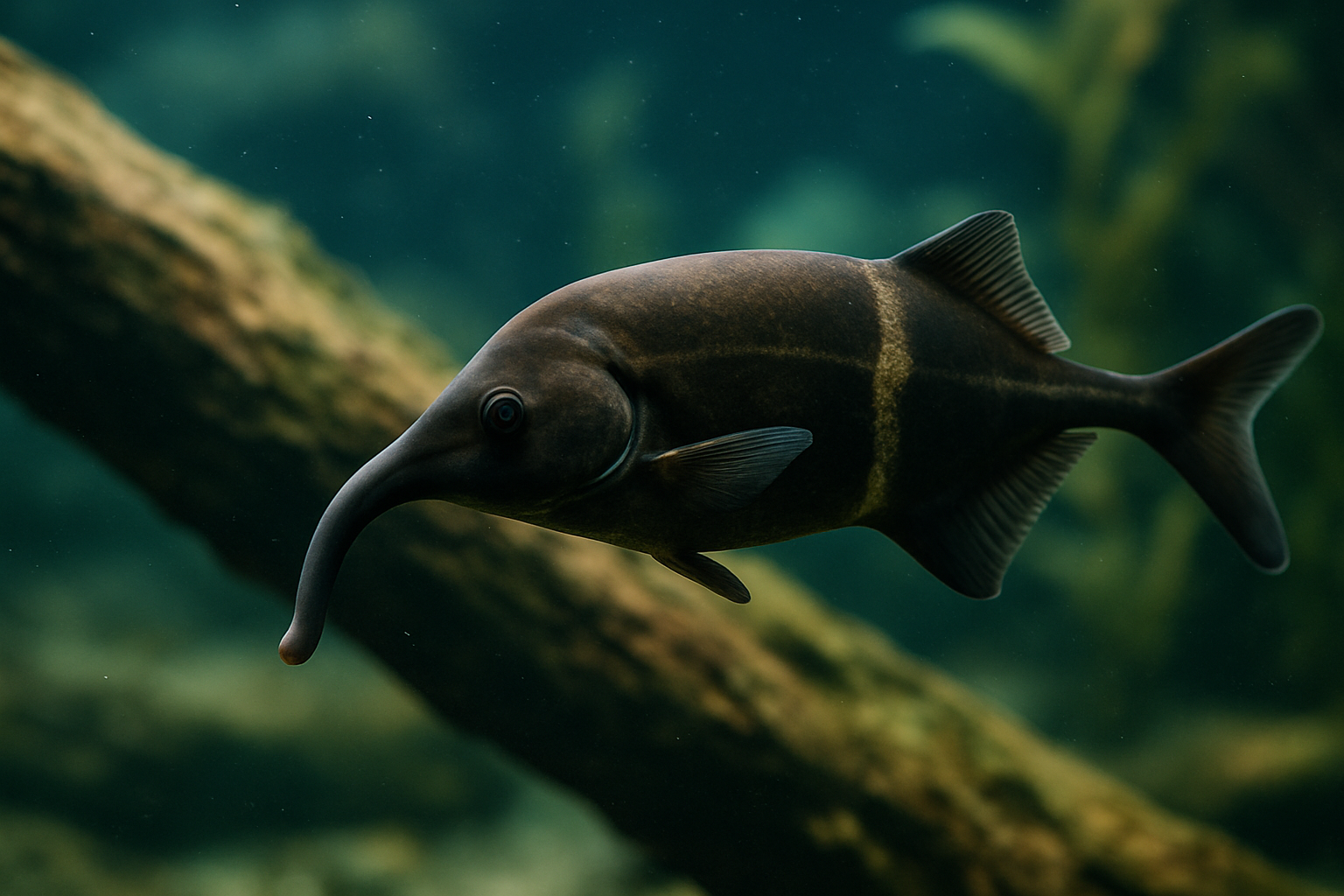Unraveling the Enigma of Elephant Nose Fish
The underwater world never ceases to amaze, and among its most intriguing inhabitants is the elephant nose fish. This peculiar creature, with its trunk-like proboscis, has captivated aquarium enthusiasts and scientists alike. In this exploration, we delve into the fascinating world of these unique fish, uncovering their remarkable abilities, evolutionary history, and the challenges they face in today's changing aquatic landscapes.

A Glimpse into Evolutionary History
The elephant nose fish belongs to the family Mormyridae, a group of weakly electric fish that has fascinated scientists for decades. Fossil records suggest that the Mormyridae family dates back to the Cretaceous period, approximately 100 million years ago. Over time, these fish developed their distinctive elongated snout, which serves multiple purposes beyond its resemblance to an elephant’s trunk.
The evolution of the elephant nose fish’s unique features is closely tied to its habitat. The murky, low-visibility waters of African rivers created selective pressures that favored the development of non-visual sensory systems. This led to the emergence of their remarkable electrosensory capabilities, which allow them to navigate, communicate, and locate prey in their dark aquatic environment.
Electrosensory Marvels
Perhaps the most fascinating aspect of the elephant nose fish is its ability to generate and detect weak electric fields. This electroreception system is so advanced that it allows the fish to create a detailed three-dimensional map of its surroundings, even in complete darkness. The fish’s electric organ, located in its tail, emits pulses of electricity at frequencies of up to 1,000 times per second.
These electric pulses bounce off objects in the water, creating distortions in the electric field that the fish can detect through specialized sensory receptors called mormyromasts. This electric sense is so acute that elephant nose fish can distinguish between different types of prey, detect potential predators, and even communicate with other members of their species through variations in their electric signals.
The Proboscis: More Than Meets the Eye
The elephant nose fish’s most distinctive feature, its elongated snout or proboscis, serves multiple functions beyond its obvious role in foraging. While the fish uses its flexible snout to probe the riverbed for small invertebrates and plant matter, research has shown that the proboscis also plays a crucial role in the fish’s electrosensory system.
The snout is packed with electroreceptors, making it an essential tool for the fish’s electric sense. Additionally, the proboscis contains taste buds and other sensory cells that help the fish locate and identify food sources in its murky habitat. This multifunctional organ is a testament to the remarkable adaptations that have allowed the elephant nose fish to thrive in its challenging environment.
Social Behavior and Communication
Contrary to popular belief, elephant nose fish are highly social creatures with complex communication systems. In their natural habitat, they often form small groups and engage in intricate social interactions. Research has shown that these fish can recognize individual conspecifics based on their unique electric signatures, much like humans recognizing faces.
Their electric signals also play a crucial role in courtship and mating behaviors. Male elephant nose fish have been observed producing specific electric discharge patterns to attract females and establish dominance hierarchies within their groups. This sophisticated form of communication highlights the intricate social lives of these seemingly simple creatures.
Conservation Challenges and Aquarium Trade Impact
As with many freshwater species, elephant nose fish face numerous threats in their natural habitats. Deforestation, pollution, and dam construction have significantly impacted the rivers and streams where these fish live. Climate change also poses a significant threat, as alterations in water temperature and chemistry can disrupt the delicate balance of their ecosystems.
The aquarium trade has brought both opportunities and challenges for elephant nose fish conservation. While their popularity among hobbyists has raised awareness about these unique creatures, it has also led to increased pressure on wild populations. Captive breeding programs have had limited success, as the specific conditions required for successful reproduction are difficult to replicate in aquarium settings.
In the aquarium trade, elephant nose fish typically command prices ranging from $20 to $50, depending on size and availability. However, their specialized care requirements, including the need for soft, acidic water and a varied diet, make them challenging pets for novice aquarists. Conservation efforts now focus on sustainable collection practices and habitat preservation to ensure the long-term survival of these fascinating fish in their natural environments.





